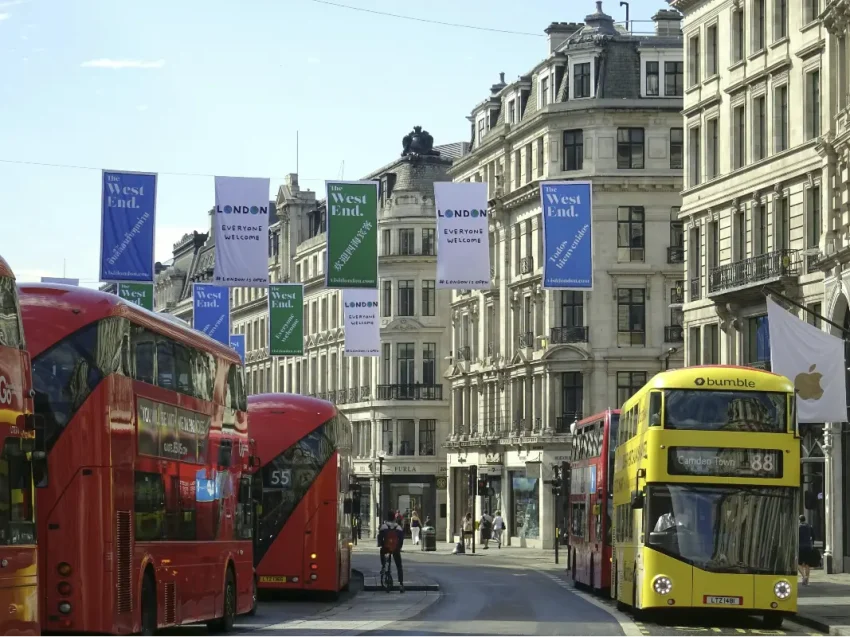What D2C Brands Can Learn from Traditional Outdoor Promotions

Direct-to-consumer (D2C) brands have long thrived in digital environments. However, as the market becomes more saturated and digital fatigue sets in, many of these brands are beginning to explore beyond the screen.
Traditional outdoor promotions, once considered the territory of legacy players with deep pockets, are quietly regaining ground. In this article, we will discuss what D2C brands can learn from them.
Contents
The Strategic Value of Out-of-Home (OOH) Media Planning
The shift towards outdoor promotions is not just about being seen by more people. It’s about building a different kind of presence. OOH media planning becomes significant for D2C brands in such cases.
It involves more than choosing the right billboard location. It requires a clear understanding of target behavior in the physical world, coordination with local foot traffic trends, and careful timing. For instance, a skincare brand may choose to appear near gyms and yoga studios, while a snack company might focus on college areas.
Technology can also be extremely useful in OOH media planning. According to Vistar Media, software that can help map buyers with OOH media owners can save a lot of time. The software can include data on all available inventory across a region. Buyers can be mapped based on their requirements, or they can manually choose a particular inventory and connect with owners.
Learning to Communicate with Simplicity
Another important lesson lies in the storytelling approach of traditional outdoor campaigns. Space is limited and attention is fleeting, yet the message must stick. This forces clarity and boldness. D2C brands, especially those selling niche or premium products, can benefit from this constraint.
Instead of over-explaining value, they learn to express it in five words or a powerful image. This kind of communication trains teams to focus on what really matters. A clear, visual hook can resonate faster and more deeply than a string of benefits squeezed into a paragraph. Outdoor promotions push brands to identify their core message and lead with it.
This is one of the core reasons why out-of-home advertising spending is increasing in the USA. According to the Out of Home Advertising Association of America, OOH revenue has surpassed $9 billion for the first time in 2024. It saw a 4.5% increase compared to 2023.
You should focus on localizing the message to create impactful copy and visuals for your outdoor media. The more you localize the content, the more you can connect with and engage with your potential consumers. Additionally, if your words connect with the audience, your ad will stick longer in their minds.
The Advantage of Physical Scale
Outdoor advertising offers a kind of reach that digital campaigns sometimes struggle to match. While a Facebook or Instagram ad can be highly targeted, it’s also easily ignored or skipped. In contrast, a full-size transit ad or building wrap is hard to miss. These large-format displays allow brands to create bold, memorable impressions, especially when tied to creative design.
This kind of physical scale has another advantage: it conveys authority. Consumers tend to associate outdoor advertising with established businesses. So when a D2C brand appears on a billboard or in a public square, it gains a perception boost. It feels bigger, more reliable, and more accessible, even if it’s still operating entirely online.
There’s also a benefit to being where the audience already is. Urban areas, transport hubs, and entertainment districts are locations filled with people in transit and waiting. Outdoor ads take advantage of these natural pauses in attention, allowing the message to land without the pressure of clicks or scrolls.
Outdoor promotions like billboards can also help you stay ahead of others by showing premium videos on larger screens. Data shows that audience preferences are shifting from user-generated content to premium videos. When these premium videos are shown on large screens, they create mesmerizing moments that can immerse your audience in your ad’s story.
Building Trust Through Tangible Presence
In an increasingly digital world, physical presence still matters. Seeing a brand in a real-life setting helps make it feel more trustworthy. For D2C businesses that operate primarily online, this kind of exposure can add a layer of credibility.
There’s also a sensory quality to outdoor promotions. They become part of a person’s environment, something they see daily while walking to work, waiting for a train, or grabbing coffee. This daily repetition builds familiarity, which gradually turns into trust. The product becomes recognizable before a consumer even engages with it directly.
Trust is key for brands trying to bridge the gap between awareness and action. While digital ads can generate quick clicks, real-world presence creates long-term associations. When someone finally visits the website or sees the brand online again, they already feel like they’ve seen it before. That familiarity makes them more likely to explore and buy.
Frequently Asked Questions
Are outdoor ads effective for D2C brands that don’t have retail stores?
Yes. Even if your brand operates purely online, outdoor advertising can still drive brand awareness and build trust. Many consumers are more likely to search for a brand online after seeing it in a public space. Outdoor visibility can support online performance by creating recognition before someone even reaches your website.
How can a D2C brand measure the impact of an outdoor campaign?
Outdoor ads don’t offer click-through rates. However, the impact can be measured through indirect metrics like branded search volume, direct traffic spikes, social media mentions, and promo code redemptions. Some brands also use QR codes or custom landing pages to track offline-to-online behavior.
What budget range should a D2C brand set aside for a small-scale outdoor test?
Costs vary by location and format, but a test campaign in just one city can start from a few thousand dollars. It’s important to treat it like any test campaign: define a goal, run it in a limited area, and evaluate before scaling.
D2C brands don’t need to abandon digital to explore the outdoors. However, looking to traditional outdoor promotions as a complement rather than a contrast can add a new dimension to their growth strategies. The goal isn’t to replicate old models but to learn from them and adapt their strongest parts to today’s market.
Combining digital media targeting prowess with outdoor staying power creates a balanced strategy. For brands willing to step outside their comfort zone, that balance can bring a new wave of growth.



